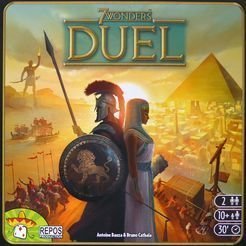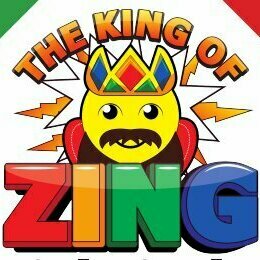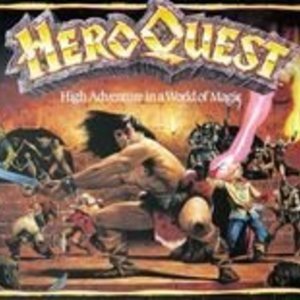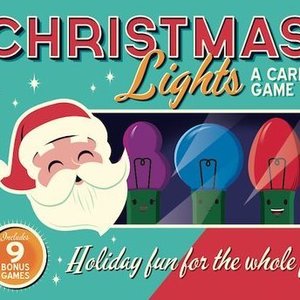
Wild Assent
Tabletop Game
Wild Assent is a 1-4 player miniatures board game with solo, player-versus-player and cooperative...
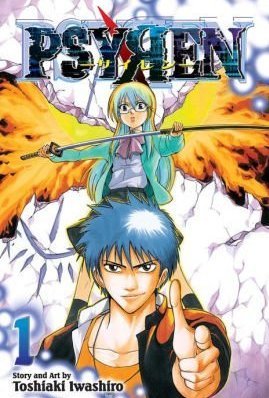
Psyren Vol. 1
Book
A mysterious classmate disappears in front of Ageha, while saying, "Save me". The only clue he has...

Eight-Minute Empire
Games and Entertainment
App
!! Release SALE -17% !! The official version of the board game - Eight-Minute Empire, by Ryan...
Akward (448 KP) rated 7 Wonders Duel in Tabletop Games
May 24, 2018

Brown Coffee
Lifestyle and Social Networking
App
Brown Mobile App is an app linked to Brown Card that you will get much more benefits from it:...

Jolly Christmas Postman,The
Book
It's Christmas Eve and the Jolly Postman is delivering greetings to various fairy-tale characters -...
Purple Phoenix Games (2266 KP) rated The King of ZING in Tabletop Games
Feb 27, 2021
The King of Zing is a card game of take-that and hand management in which players are trying to be the first to reach 100 points. Sounds simple enough, right? Well, throw some Specialty cards into the mix that allow opponents to manipulate your turn strategy, and even occasionally place their own tokens on your board, and you’ve got quite a strategic conundrum!
DISCLAIMER: We were provided a prototype copy of this game for the purposes of this review. These are preview copy components, and I do not know for sure if the final components will be any different from these shown. Also, it is not my intention to detail every rule in the game, as there are just too many. You are invited to download the rulebook, back the game through the Kickstarter campaign, or through any retailers stocking it after fulfillment. -T
To setup for a game of The King of Zing, first place the board in the center of the table. Shuffle the deck of cards, dealing 5 to each player, and give players the 25 tokens in their chosen color. (Note: This prototype did not include tokens, so I improvised and borrowed some from another game. The final tokens will not look like the ones pictured below!). Place the remaining cards on the Deck space of the board, creating a draw deck, and flip over the top card to the Discard space. Choose a starting player, and the game is ready to begin!
Throughout the game, you will be drawing or playing cards. At the start of your turn, you will either draw the top card of the Draw deck, or take the top card of the Discard pile into your hand. If the card you drew matches your chosen color, you may immediately play it to your Grave (personal discard pile) and place one of your tokens onto your player board on the corresponding number, thus ending your turn. Otherwise, once you draw a card, you can do the following: select a card from your hand to go in the communal Discard pile, play a Specialty card, place a card from your hand face-up or face-down onto any player’s open Hold space, or play the face-down card from your own Hold space. **Important note** If there is ever a face-up card in your Hold at the start of your turn, you must play it and your turn ends. (This could be a strategic way to encumber opponents!). Play continues in this fashion until a player has collected 4 tokens in a row on their player board. Points are then scored (based on the number of tokens you played), and then the game resets – a series of games is played until one player reaches 100 points and is declared the ultimate winner!
The first thing I want to touch on is the rulebook for The King of Zing. As far as rulebooks go, it is not my favorite. There are some areas of ambiguity that left me confused, and it definitely took several read-throughs and a couple of false-starts at playing to figure out exactly how the gameplay flows. Being a prototype copy of the game, I imagine that editing/rewriting of the rulebook is something that will happen before final production.
Next, the overall gameplay. The different elements are reminiscent of other classic games – getting 4 tokens in a row a la Connect 4, the use of Specialty cards (Reverse, Skip, etc.) a la UNO. In their respective games, these mechanics work well, but how do they work together in The King of Zing? For the most part, I would say they work relatively well together. The mechanics compliment each other and feel logical in play. Probably the most unique aspect of Zing for me is the Hold space for each player. The ability to play cards to Hold spaces, either your own or of an opponent, gives you the opportunity to either plan a strategy/turn in advance, or potentially hinder an opponent. Playing a card face-up to a Hold guarantees that it will be played on the next turn, so not only are you planning ahead, but also broadcasting your move to your opponents. Conversely, a card played face-down could be resolved in any future turn, and can be a battle of risk/reward when played by opponents. A card played to my Hold face-down could just be a useless card for me, causing me to waste a turn to resolve it. BUT, what if an opponent gives you a card you actually need face-down – you don’t know that it is useful, but are you willing to risk a wasted turn to find out? The Hold space adds a new twist to the game that elevates the gameplay.
Components. Zing consists of a board and a big stack of cards. The board is nice and sturdy, the play areas clearly marked. The cards are colorful and thick, and the art is mostly minimal. The Specialty cards have a short description of their use printed on the card, but a more in-depth explanation can be found in the rulebook. As I stated above, this copy did not have any player tokens, so I cannot comment on how those will look in final production. All in all, a decent production quality.
All in all, The King of Zing feels like a take on an old classic. The gameplay incorporates several tried-and-true mechanics, and the flow of the game is pretty straightforward. The rulebook even suggests some gameplay variations, so The King of Zing can be played with gamers as young as 4 years old. Ultimately, the rulebook needs an overhaul, but the skeleton of the game seems to hold up. If you’re looking for something that brings back some nostalgia for older games, try The King of Zing.
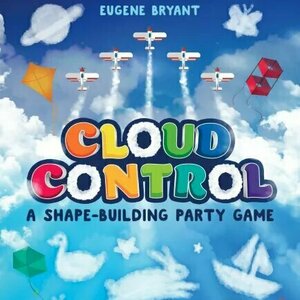
Cloud Control
Tabletop Game
Cloud Control is a fun and fast paced game of creative imagination where you try to score the most...
Purple Phoenix Games (2266 KP) rated Christmas Lights in Tabletop Games
Dec 29, 2020
Christmas Lights is a card game for two to six players that has each player attempting to organize their tangle of light strands into some sort of order. However, as the lights aren’t yet on players are working in the dark. Therefore players cannot see the lights they are untangling and will need help from other players along the way.
DISCLAIMER: We were provided a copy of this game for the purposes of this review. This is a retail copy of the game, so what you see in these photos is exactly what would be received in your box. I do not intend to cover every single rule included in the rulebook, but will describe the overall game flow and major rule set so that our readers may get a sense of how the game plays. For more in depth rules, you may purchase a copy online or from your FLGS. -T
To setup a game shuffle and place out the Event, Pattern, and Bulb card decks into their piles. Deal each player five Bulb cards face-down and two Pattern cards. Each player will also be given a random Character card and player aid card. Whomever is dealt the Santa character will be the first player. The players will consult their Pattern cards and choose one to begin working on initially. The game is now ready to begin!
On a turn a player has the opportunity to take four different actions, in their specific order: Play, Swap, Sale, and Refill. To Play one or more cards, simply choose it/them from hand and place it/them down to begin or continue the strand pictured on the first Pattern card in exact sequence order. Should a player wish to Swap cards with another player, they simply take the swap card from their hand and grab whichever card they please from an opponent’s hand to be placed in their own. Next the player may offer a card from their hand to be sold to other players during the Sale phase. Should another player wish to purchase the card, they spend not money but information to the seller. This information comes in the form of answers to yes/no questions about cards in the active player’s hand. Wait, why, you ask? Because player hands in this game are played facing away from the player, exactly like are played in Hanabi. That’s right, players do not see the cards in their own hands, but rather every other player’s hand. Once some or all of these phases have been played, the active player will need to Refill their hand back up to five cards. It is now the next player’s turn.
Each of these steps will need to be taken in order. Should a player not wish to Swap, for example, they may not hold a Sale and then decide to Swap afterward.
Some Bulb cards are special. These include the Broken Bulb, the Bubble Bulb, and the Plug. A player may place a Broken Bulb anywhere in their strand sequence as a temporary placeholder, but it will need to be covered up by the correctly-colored Bulb card in the future before the player is able to score the strand. The Bubble Bulb is essentially a Wild Bulb and can be played in place of any colored Bulb. However, once played it will remind the player to draw and play an Event card immediately. These Event cards may be either good or bad for the active player, so there is risk in playing the wild Bubble Bulbs. Once the first strand is completed per the appropriate Pattern card, the player will need to play a Plug card in order to connect their first strand to their next. Then the player will be able to begin work on their second strand.
Play continues in this fashion of blind play and deduction of held cards until one player successfully completes both of their Pattern cards. Every player will be able to take the same amount of turns, and if there is a tie between players the used Broken and Bubble Bulb cards will be taken into consideration to determine the winner.
Components. This is a card game. There are a lot of cards. The cards are all great quality, and though I have seen reports of flimsy stock or even see-through quality thickness, I have not had this issue (though I believe I have the second edition of the game, so that might be a difference existing between the editions). The art on the cards is very cute and endearing. Each color of bulb is also a different shape so our colorblind friends should have an easier time playing as well. Each card is laid out well and I have no complaints about components at all.
The gameplay is such that I believe players will either love or hate. Not being able to see the cards in your hand can certainly be stressful and frustrating, but it is a very light card game. Get over it. Again, if you have played Hanabi before, you know the feeling. But it changes the game so drastically when you have to remember what’s in your hand at all times, and when players are swapping with you left and right it is definitely easy to forget what’s going on in your hand. Not that I ever had that problem… Okay, it happens all the time, but I just laugh it off.
I do love this little game and am so happy I took a chance on it. Though I am still learning to love Christmas (Halloween is my jam), this game has a ton going for it. In addition to the game I have loosely described in this review Christmas Lights comes with a booklet that has rule sets for 12 different games that can be played with the included components. TWELVE EXTRA GAME MODES. That’s crazy! So when purchasing Christmas Lights people are actually purchasing 13 games in one box, with two of those modes being for Solo players. The variety and replayability here is off the charts and I am excited to play through the other game modes as soon as I can, and I know my wife will be into as well.
That said, having a Christmas-themed game that delights my wife and I equally is certainly something that I can easily recommend. Purple Phoenix Games gives this one a cheery 10 / 12 for its portability, variability, cute art, and great game play. If you see it in stores, pick up a copy. I am going out on a limb and saying that you could even play this game when it’s NOT Christmastime and still have a great experience with it. If you are looking for something a little different and like Hanabi but wish for something else, give Christmas Lights a shot. Hopefully you will find it as charming as we both do. Oh, and a little pro tip: pour yourself a mug of chai and grab a gingerbread cookie whilst playing. Not necessary, but it certainly works for us. Happy Holidays, ALL holidays, everyone!
